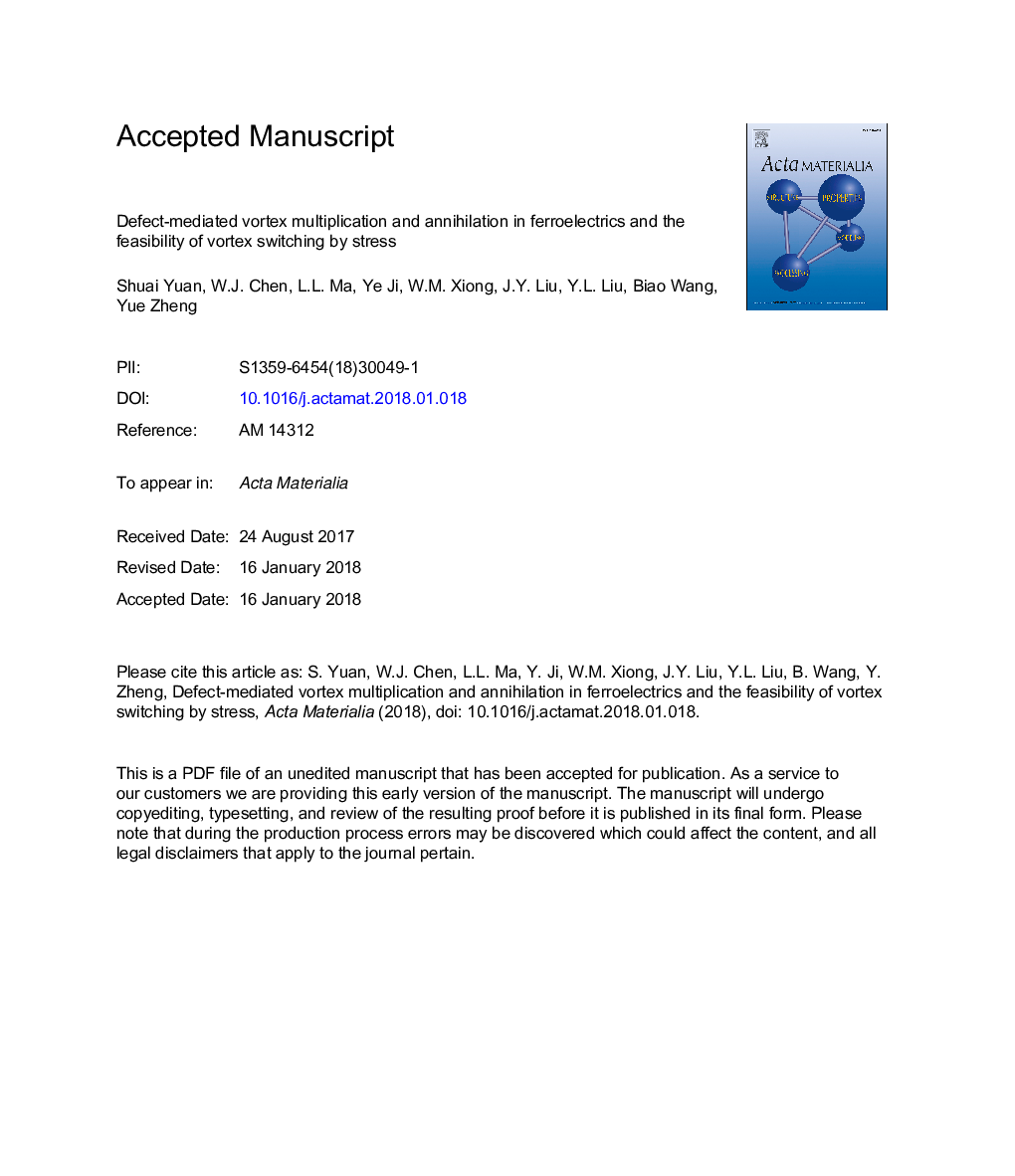| Article ID | Journal | Published Year | Pages | File Type |
|---|---|---|---|---|
| 7876495 | Acta Materialia | 2018 | 38 Pages |
Abstract
The possibility of switching the direction of the dipole toroidal moment in ferroelectrics provides exciting opportunities for development of novel nanoscale memory and logic devices. However, a practical control of vortex chirality is rather challenging at present stage, not to mention via mechanical methods. In this paper, we performed the phase-field simulations to show that mechanical switching of vortex chirality can be achieved in ferroelectric nanoplatelet via defect engineering. After introducing a void defect in the nanoplatelet, relative stability of single-vortex state and multi-vortices state is found to be altered. Importantly, during stress-induced vortex multiplication process, the void is a favored nucleation core of new vortex; meanwhile, vortices tend to annihilate away from the void during a vortex annihilation process. As the favored regions of vortex nucleation and annihilation are not the same, a deterministic mechanical switching of vortex chirality can be achieved. The effects of temperature, shape of the nanoplatelet, void size, as well as void position, on the defect-mediated vortex switching behaviors are systematically revealed. Our study demonstrates the feasibility of vortex switching by mechanical loads and provides a route to control and develop electromechanical devices based on ferroic vortices.
Related Topics
Physical Sciences and Engineering
Materials Science
Ceramics and Composites
Authors
Shuai Yuan, W.J. Chen, L.L. Ma, Ye Ji, W.M. Xiong, J.Y. Liu, Y.L. Liu, Biao Wang, Yue Zheng,
